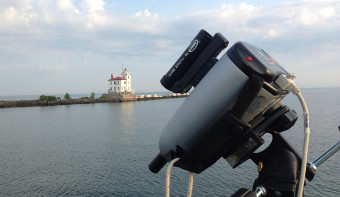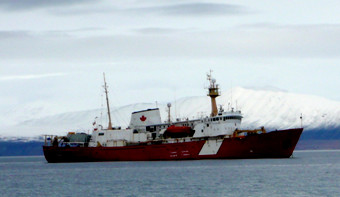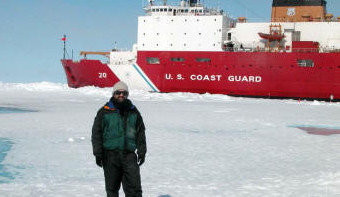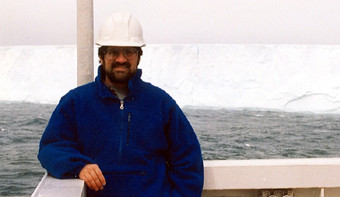As a broadly trained Earth scientist, I study natural and human impacts on climate and the environment. With training in oceanography and aquatic biology, I view problems from a systems-level perspective. That is important because scientific advances often occur at boundaries between disciplines. By figuring out how materials vary in time and space, I can answer a host of problems that cut across fields.
My approach uses quantitative methods to tease apart subtle signals hidden in the light bouncing off an object. When energy interacts with matter, it leaves clues as to what is present. With the right tools and methods, the color of an object reveals its composition! Visible spectroscopy, which measures the details of the color of this reflected light, is my tool of choice. This approach lets me extract meaningful environmental signals from large, complex datasets. These methods are fast and easy to use, allowing me to conduct water quality research on harmful algal blooms using images collected from aircraft and satellites, and to conduct climate change studies by measuring sediment and rock cores from lakes, the ocean or ancient bedrock.
My work makes use of physical properties data to study earth materials on a variety of spatial and temporal scales. In paleoclimate studies spanning the Plio-Pleistocene to the Holocene, I reconstruct changes in ocean circulation and heat transport between the tropics and poles based on analysis of sediments. Working in the Arctic, I track sediment provenance using visible spectroscopy, grain size analysis, x-ray fluorescence and magnetic susceptibility. These techniques provide information about the origins, properties and distribution of specific sediment types. This, in turn, reveals information about climate change in the geologic past.
Within the modern system, I develop techniques for monitoring harmful algal blooms (HABs) by comparing visible spectroscopy of field-collected water samples and remote sensing images. This allows me to identify regions affected by HABs over the broad areas sampled by aircraft or earth-orbiting satellites, instead of being restricted to the smaller number of sites where field samples can be collected. I have applied these techniques in areas where HABs cause seasonal degradation of water quality, with significant impacts on the local economy, recreation and tourism. My study sites include Lake Erie, Grand Lake St. Marys, and a number of smaller inland lakes, although given the growth in HABs, I am starting to work in areas outside Ohio.
My specific research topics are:
- Hyperspectral visible remote sensing of inland waters
- Sediment analysis using visible spectroscopy, laser particle grain size analysis and elemental analysis by x-ray fluorescence
- Ecology and physiology of modern and fossil planktic foraminifers
- Paleo-temperature and paleo-productivity by foraminiferal faunal analysis
- Oxygen and carbon stable isotope geochemistry in low temperature carbonates
I have received research funding from NASA, the National Science Foundation, the Ocean Drilling Program, Ohio SeaGrant, the Ohio Department of Education, NOAA, the KSU Farris Family Innovation Fund for Early Achievement, and the KSU University Research and Teaching Councils.
Please take a few minutes to look through this site to learn more about my work.
Read more about my water quality research
Read more about my paleoclimate change research




